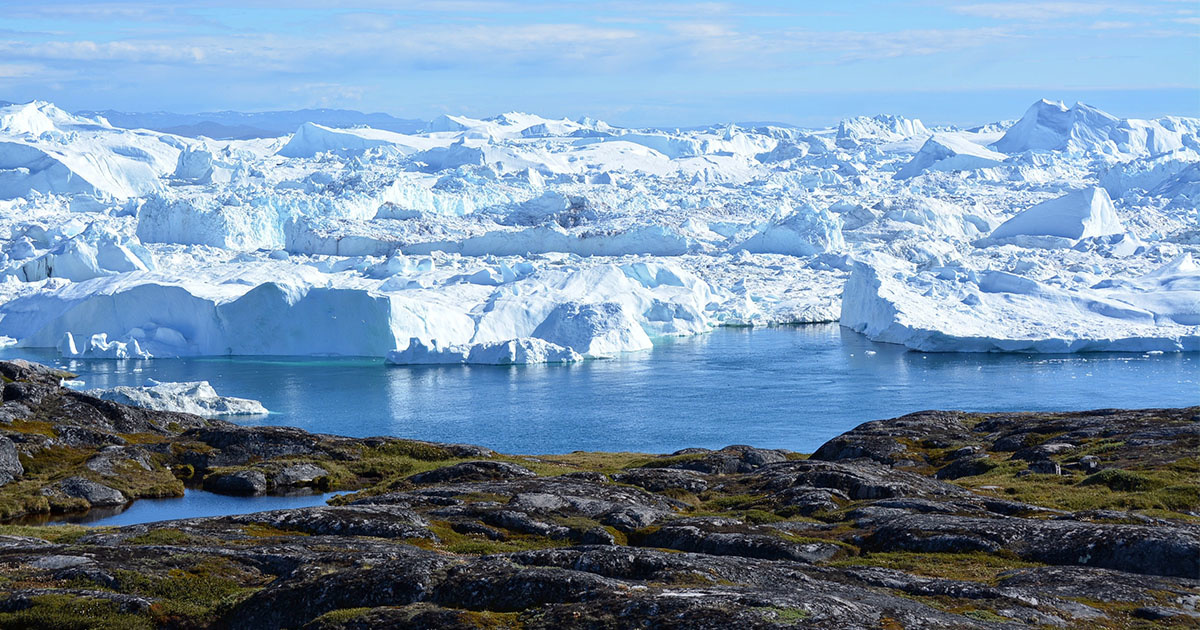
Ice Sheets in Greenland, Antarctica Could Reach Catastrophic ‘Tipping Points’ if We Don’t Limit Warming

Scientists just gave us another terrifying reason to limit global warming to 1.5 degrees Celsius above pre-industrial levels: If temperatures push much beyond that point, both Greenland and Antarctica‘s ice sheets could reach a point where nothing can stop them from melting.
An international team of researchers published this chilling finding in Nature Climate Change Monday. The researchers set out to study how the ice sheets would fare in a warming world, and the results were urgent.
“A big take-away is that the ice sheets, like many components of the climate system, likely have tipping points. Once they reach a certain amount of warming (~1.5 – 2.0°C), positive feedbacks kick in and commit us to long-term ice sheet mass loss and sea level rise,” study author and Rowan University School of Earth and Environment Assistant Professor Luke Trusel explained on Twitter.
A big take-away is that the ice sheets, like many components of the climate system, likely have tipping points. Once they reach a certain amount of warming (~1.5 – 2.0°C), positive feedbacks kick in and commit us to long-term ice sheet mass loss and sea level rise. (2/4)
— Luke Trusel (@highlatitude) November 12, 2018
If these tipping points are tipped, it would be catastrophic for coastal communities and low-lying islands. The ice sheets combined contain enough water to raise sea levels by 65 meters (approximately 213 feet), according to a press release from the Netherlands Earth System Science Center (NESSC), one of the groups involved with the research.
To put that in perspective, this animation shows what the world would look like after just six meters (around 20 feet) of sea level rise.
Sea Level Rise Animation in Google Earth
www.youtube.com
Of course, all of that sea level rise wouldn’t happen at once. It would take several thousands of years for the Greenland ice sheet to disappear entirely and hundreds to thousands of years for the same thing to happen to the West Antarctic ice sheet.
But, as Trusel points out, it’s frightening to think that our inaction today could set things in motion that would persist so long after we are gone.
“These ice sheet instability mechanisms mean we are committed to sea level rise for centuries and millennia based on what we do now and in the very near future,” Trusel tweeted.
Besides, sea level rise is already causing problems for islands and coastal communities around the globe in the form of both more extreme storm surges and daily erosion and tidal flooding. Adding more would only increase the devastation.
Limiting warming to 1.5 degrees Celsius by 2100 wouldn’t stop sea level rise entirely, of course. Melting is already in motion and would likely continue at current rates until the end of the century, though researchers won’t rule out the possibility that those rates could still increase. But stopping our global fossil fuel binge at the 1.5 degree mark could be the difference between manageable difficulties and catastrophe.
Lead author and Université Libre de Bruxelles professor Frank Pattyn laid it out at the beginning of a Twitter thread explaining his research.
“It is important to limit global warming by 2100 to 1.5°C to maximise the chance of avoiding so-called tipping points that would dramatically accelerate mass loss from Greenland and Antarctic ice sheets,” Pattyn wrote.
1. It is important to limit global warming by 2100 to 1.5°C to maximise the chance of avoiding so-called tipping points that would dramatically accelerate mass loss from Greenland and Antarctic ice sheets.
— Frank Pattyn (@FrankPattyn) November 12, 2018

 233k
233k  41k
41k  Subscribe
Subscribe 